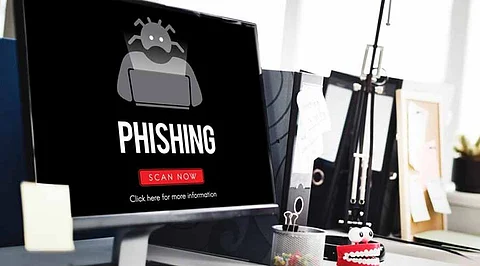

Phishing is among the most common and effective ways that malicious actors use to breach businesses, accounting for one-third of all email-based cyber attacks in 2024. And with millions of these emails being sent every day, businesses should start thinking about whether or not their workforce can recognize and respond to phishing threats effectively.
A single phishing attack can wreak havoc on the entire business, potentially compromising sensitive data and systems or resulting in a big financial loss. And let’s not forget the reputational damage an event like that could cause, significantly diminishing customer trust.
Spam filters and firewalls can’t keep every phishing email out of your team’s inboxes, which means it’s largely up to the humans to keep attacks from being successful. Employees don’t have to be among your cyber posture’s vulnerabilities. With the right training and mindset shift, they can become an organization’s biggest cybersecurity asset.
In this article, we will focus on phishing simulation, a specific training method that has proven very effective in this regard.
The human factor plays a huge role in cybersecurity. While there are many cybercriminals in the world, very few of them are skilled enough to actually “hack” into systems through technical skill alone. There are many tech solutions that, for the most part, provide adequate defenses from those types of breach attempts.
Instead, today’s threat actors tend to rely on a human victim making a mistake or misjudgment, which is where the criminals gain the advantage. So, they bombard their targets with malicious messages until someone takes the bait. And someone very often does, which is why they keep doing it.
In fact, researchers found that 82% of all cyberattacks involve the human element. This is very often some form of phishing email or a different social engineering tactic centered around building trust and triggering a sense of urgency in the victim.
For that reason, technical defense measures like firewalls, MFA and encryption are partial pieces of the puzzle for strong cybersecurity. What’s also needed is a resilient and security-aware workforce that knows how to navigate the relentless attacks from criminals.
One of the best ways to create that awareness is through real-life exposure, which is exactly what simulated phishing provides.
A simulated phishing attack mimics real-world tactics to allow employees to experience these looming threats in a controlled and risk-free environment. This is much better than traditional security awareness programs, which typically rely on theoretical lessons that are easy to forget and fail to replicate the pressure of real-world decision-making.
Simulated phishing emails are delivered straight to employee inboxes, so they don’t know unless they take a good look at it whether an email is a legitimate message, part of a training, or a genuine threat. Only after they interact with an email – whether they click on a link or attachment or report the email as malicious – will they get feedback that it was a simulated attack and insights on what they did right or how they could improve.
The content of the simulations can be easily updated to match the latest techniques used by cybercriminals, which prepares the workforce for a variety of realistic scenarios.
Perhaps the best part about these simulations is that they have a spillover effect on the overall security awareness of employees. Not only will they have a better ability to recognize suspicious emails, but they will gain a completely different perspective on cybersecurity and its importance. This mindset shift can completely transform the overall security posture and resilience of an organization.
There are a few ways organizations can maximize the effectiveness of their simulated phishing campaigns.
Since these trainings are highly customizable, the content of the emails should be company and industry-relevant. It would be even better if the simulations are tailored to specific roles or departments within the organization. After all, today’s sophisticated threat actors are using AI to personalize their messages, so effective awareness requires familiarity with these tactics.
It’s important to deliver the campaigns regularly. There are so many tactics attackers are using nowadays, so exposing the workforce to as many of them as possible is the best way to prepare. Of course, it’s important not to overload people with so many simulations that they tune them out, but familiarizing team members with the spectrum of phishing flavors, at a realistic cadence, can go a long way.
Regardless of how employees perform with the training, they should never be scrutinized or shamed for failing to recognize a simulated phish. The training aims to educate and improve awareness, not to punish mistakes. Even if they fail the first time, this will likely make them much more skeptical in the future – both with simulated emails and actual threats.
A big emphasis should also be placed on tracking key metrics, including click-through rates, reporting rates, and response times. This data can pinpoint areas where additional training is needed and guide future improvements to the simulation program.
It’s important for business leaders to start seeing their employees as a cybersecurity asset, not a liability. Large investment in security technology is necessary, but without the backbone of a security-aware workforce, it will be difficult to stop the wave of attacks that specifically target poor human judgment decision-making.
With phishing simulation, organizations get a reliable and up-to-date mechanism for honing employee cybersecurity skills, which will pay dividends well into the future.
